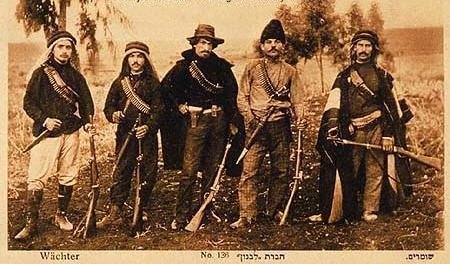22.10.2012
Menorah Center in Ukraine
Last week the worlds biggest Jewish Community Center “Menorah” was opened in Dnipropetrovsk (Ukraine).
A lot of people are wondering why Dnipropetrovsk and not such famous jewish cities as Odessa, Uman or Kiev?
Most of the jewish and non jewish people don’t know that the jewish history in this city has started long before this city
was founded and thats why it has always been one of the most jewish cities of the eastern Europe.
Dnipropetrovsk is located in the region, which is historically called “Wild Fields”, it was a part of Kiev Rus, Poland, Russian Empire, but actually it has always been a cossacks region, some kind of the real “Wild wild East”.
According to the research of Alexander Rigelman (russian-german officer during the Russian-Turkish War) “The History of the Small Russia and the cossacks” (1785): “The cossacks from Porohu Dniepru have proclaimed that their army was founded by the Simeon of the khazar descent, who came from Poland and became a leader of the people, who were famous for shooting the bow and later were called cossacs”
*by the khazar descent in this case are ment jewish people, because most of Khazars were tengrians and the most of the khazarian jews were originally from romanioth jews of Byzantine.
After Catherine the Great has conquested Crimea, she began to build such cities as Odessa, Sevastopol, Simpheropol and in 1783 Yekaterinoslav (modern Dnipropetrovsk) in the “wildest” regions of the modern Ukraine. As the residence of the duke Potyomkin, who was her lover and the chief commander of Zaporogian Cossacs, Yekaterinoslav became a cultural and political capital of the Southern Ukraine. The city was inhabited by the reachest jews from all the conquested territories of Ottoman Empire and Poland. In suburbs were created agricultural jewish colonies.
In 1865 the jewish population of the city was 35% of all inhabbitants (42% were russians, and 16% ukrainians).
On the beginning of the 20th century a lot of Dnipro jews migrated to the USA and Argentina, because of several revolutions and the ukrainian civil war.
It is also important to mention that the jews of Dnipropetrovsk Region played very important role in the anarchist republick of Nestor Machno, whos capital also has been Dnipropetrovsk. In the Revolutionary Insurrectionary Army of Ukraine (the Black Cossack Army of Nestor Machno) were even jewish batalions. Andataman Grigoriev (the leader of the Green Army) was executed by Nestor Machno for his anti-semitic politics and participations pogroms.
A lot of former jewish members of the Machnos army have fled to Holy Land and joint the haShomer haTzair.

Since 1909 rabbi Levi-Itzhak Shneerson (the father of the last lubavichi rabbi) was chosen to a chief rabbi of Yekaterinoslav. He made all he could to keep the communities united (there were about 40 sinagogues in the city before the Soviet Times). As dozens of other jews he became a victim of the Stalins Repressions and was deported to Kazakhstan in 1939.
During the soviet times most of the sinagogues became factories, the rest were destroyed during the WW. On the 12th of October 1941 11.000 jewish people of Dnipropetrovsk were killed at the modern “Gagarin Park” after the city was taken by the Wehrmacht.

In Hulay Pole, which was the suburb of Dnipropetrovsk (now belongs to Donzk Region), when it was clear that the germans are planning to kill the jewish populations, dozens of ukrainian families have joint their jewish neighbours and were killed by the SS.
After the WW 2 a lot of jewish families and jewish soldiers of the red army returned to the city, nevertheless the jewish life of the city has almost died. From 40 sinagogues sirvived only 2: The Golden Rose and the Small Sinagogue. However the Golden Rose was used by the soviets as a cinema hall for the textile manufactory. (My father says that his parents visited the singagouge for only for ca. 30 mins on such holidays as Yom Kippur. They were afraid of the KGB and celebrated everything esle silently at home).


(When I first time visited a sinagogue I was 3 yers old, it was in 1988, there were only few older people. And until the beginning of the 90th me and 2-3 children of the jews, who came to Dnipro from Caucasus were the only children there).
The revival of the jewish life in the city began in 1991 when rabbi Shmuel Kaminetzki was sent by the Lubavichi Rabbi to Dnipro. At first there was opened a jewish sundays schools and later a jewish school, which is nowdays the largest jewish school of the former USSR, by the 1995 the small sinagogue became full of the jewish people of all generations. On each holiday there were great concerts in the largest venues of the city.
My sister became one of the leaders of the jewish students club Hillel. In 2000 The Golden Rose was returned to the jewish community and was opened by the president of Ukraine. Now the jewish businessmen of the city financed the building of the largest jewish community center of the world.
Dnipropetrovsk is the economical and industrial capital of Ukraine, however there not only famous jewish businessmen, scientist and politicians, who have made this city famous. Also a lot of jewish artists, painters, composers and musicians were born or grew up there.
The generation of the jewish revival is also very active in the cultiral life of the city and Ukraine. For example Ilya Svidler (25 y.o.) is the founder of the first ukrainian cinema community and the first international social network for the filmmakers www.cinemalife.eu. The creative photographer and disigner Danil Polevoy is also a member of the Dnipropetrvsk community. Also the very first Chamber Orchestra “Vremena Goda” and now the most which began to play jazz in the soviet times was founded by its conductor jewish Gary Logvin and is nowdays known as the most prestigious and the most jewish orchestra of Ukraine.
Comments are closed.

